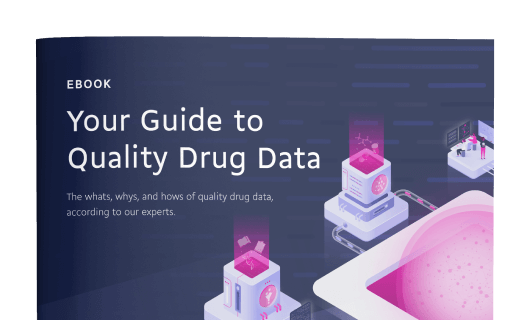Identification
- Generic Name
- [(2-AMINO-ALPHA-METHOXYIMINO-4-THIAZOLYLACETYL)AMINO]METHYLBORONIC ACID
- DrugBank Accession Number
- DB07599
- Background
Not Available
- Type
- Small Molecule
- Groups
- Experimental
- Structure
- Weight
- Average: 258.063
Monoisotopic: 258.059406016 - Chemical Formula
- C7H11BN4O4S
- Synonyms
- Not Available
Pharmacology
- Indication
Not Available
 Reduce drug development failure ratesBuild, train, & validate machine-learning modelswith evidence-based and structured datasets.Build, train, & validate predictive machine-learning models with structured datasets.
Reduce drug development failure ratesBuild, train, & validate machine-learning modelswith evidence-based and structured datasets.Build, train, & validate predictive machine-learning models with structured datasets.- Contraindications & Blackbox Warnings
 Prevent Adverse Drug Events TodayTap into our Clinical API for life-saving information on contraindications & blackbox warnings, population restrictions, harmful risks, & more.Avoid life-threatening adverse drug events with our Clinical API
Prevent Adverse Drug Events TodayTap into our Clinical API for life-saving information on contraindications & blackbox warnings, population restrictions, harmful risks, & more.Avoid life-threatening adverse drug events with our Clinical API- Pharmacodynamics
Not Available
- Mechanism of action
Target Actions Organism UBeta-lactamase TEM Not Available Escherichia coli - Absorption
Not Available
- Volume of distribution
Not Available
- Protein binding
Not Available
- Metabolism
- Not Available
- Route of elimination
Not Available
- Half-life
Not Available
- Clearance
Not Available
- Adverse Effects
 Improve decision support & research outcomesWith structured adverse effects data, including: blackbox warnings, adverse reactions, warning & precautions, & incidence rates. View sample adverse effects data in our new Data Library!Improve decision support & research outcomes with our structured adverse effects data.
Improve decision support & research outcomesWith structured adverse effects data, including: blackbox warnings, adverse reactions, warning & precautions, & incidence rates. View sample adverse effects data in our new Data Library!Improve decision support & research outcomes with our structured adverse effects data.- Toxicity
Not Available
- Pathways
- Not Available
- Pharmacogenomic Effects/ADRs
- Not Available
Interactions
- Drug Interactions
- This information should not be interpreted without the help of a healthcare provider. If you believe you are experiencing an interaction, contact a healthcare provider immediately. The absence of an interaction does not necessarily mean no interactions exist.Not Available
- Food Interactions
- Not Available
Categories
- Drug Categories
- Not Available
- Chemical TaxonomyProvided by Classyfire
- Description
- This compound belongs to the class of organic compounds known as 2,4-disubstituted thiazoles. These are compounds containing a thiazole ring substituted at the positions 2 and 3.
- Kingdom
- Organic compounds
- Super Class
- Organoheterocyclic compounds
- Class
- Azoles
- Sub Class
- Thiazoles
- Direct Parent
- 2,4-disubstituted thiazoles
- Alternative Parents
- 2-amino-1,3-thiazoles / Heteroaromatic compounds / Secondary carboxylic acid amides / Boronic acids / Amino acids and derivatives / Organic metalloid salts / Azacyclic compounds / Primary amines / Organopnictogen compounds / Organic oxides show 3 more
- Substituents
- 1,3-thiazol-2-amine / 2,4-disubstituted 1,3-thiazole / Alkylborane / Amine / Amino acid or derivatives / Aromatic heteromonocyclic compound / Azacycle / Boronic acid / Boronic acid derivative / Carbonyl group show 16 more
- Molecular Framework
- Aromatic heteromonocyclic compounds
- External Descriptors
- Not Available
- Affected organisms
- Not Available
Chemical Identifiers
- UNII
- Not Available
- CAS number
- Not Available
- InChI Key
- FMYGJTQJYFMFCR-XGICHPGQSA-N
- InChI
- InChI=1S/C7H11BN4O4S/c1-16-12-5(4-2-17-7(9)11-4)6(13)10-3-8(14)15/h2,14-15H,3H2,1H3,(H2,9,11)(H,10,13)/b12-5-
- IUPAC Name
- {[(2Z)-2-(2-amino-1,3-thiazol-4-yl)-2-(methoxyimino)acetamido]methyl}boronic acid
- SMILES
- CO\N=C(/C(=O)NCB(O)O)C1=CSC(N)=N1
References
- General References
- Not Available
- External Links
- PubChem Compound
- 9600412
- PubChem Substance
- 99444070
- ChemSpider
- 7874552
- BindingDB
- 50202234
- ChEMBL
- CHEMBL227452
- ZINC
- ZINC000169748500
- PDBe Ligand
- CXB
- PDB Entries
- 1nym
Clinical Trials
Pharmacoeconomics
- Manufacturers
- Not Available
- Packagers
- Not Available
- Dosage Forms
- Not Available
- Prices
- Not Available
- Patents
- Not Available
Properties
- State
- Solid
- Experimental Properties
- Not Available
- Predicted Properties
Property Value Source Water Solubility 0.207 mg/mL ALOGPS logP -0.48 ALOGPS logP 0.4 Chemaxon logS -3.1 ALOGPS pKa (Strongest Acidic) 8.68 Chemaxon pKa (Strongest Basic) 3.28 Chemaxon Physiological Charge 0 Chemaxon Hydrogen Acceptor Count 7 Chemaxon Hydrogen Donor Count 4 Chemaxon Polar Surface Area 130.06 Å2 Chemaxon Rotatable Bond Count 5 Chemaxon Refractivity 56.14 m3·mol-1 Chemaxon Polarizability 24.84 Å3 Chemaxon Number of Rings 1 Chemaxon Bioavailability 1 Chemaxon Rule of Five Yes Chemaxon Ghose Filter Yes Chemaxon Veber's Rule No Chemaxon MDDR-like Rule No Chemaxon - Predicted ADMET Features
Property Value Probability Human Intestinal Absorption - 0.6647 Blood Brain Barrier + 0.6615 Caco-2 permeable - 0.6225 P-glycoprotein substrate Non-substrate 0.5847 P-glycoprotein inhibitor I Non-inhibitor 0.9304 P-glycoprotein inhibitor II Non-inhibitor 0.9872 Renal organic cation transporter Non-inhibitor 0.9279 CYP450 2C9 substrate Non-substrate 0.7615 CYP450 2D6 substrate Non-substrate 0.8092 CYP450 3A4 substrate Non-substrate 0.6366 CYP450 1A2 substrate Non-inhibitor 0.6657 CYP450 2C9 inhibitor Non-inhibitor 0.7648 CYP450 2D6 inhibitor Non-inhibitor 0.892 CYP450 2C19 inhibitor Non-inhibitor 0.7143 CYP450 3A4 inhibitor Non-inhibitor 0.6721 CYP450 inhibitory promiscuity Low CYP Inhibitory Promiscuity 0.9199 Ames test AMES toxic 0.5662 Carcinogenicity Non-carcinogens 0.6971 Biodegradation Not ready biodegradable 0.9816 Rat acute toxicity 2.5516 LD50, mol/kg Not applicable hERG inhibition (predictor I) Weak inhibitor 0.9905 hERG inhibition (predictor II) Non-inhibitor 0.8838
Spectra
- Mass Spec (NIST)
- Not Available
- Spectra
- Chromatographic Properties
Collision Cross Sections (CCS)
Not Available
Targets

Build, predict & validate machine-learning models
Use our structured and evidence-based datasets to unlock newinsights and accelerate drug research.
Use our structured and evidence-based datasets to unlock new insights and accelerate drug research.
- Kind
- Protein
- Organism
- Escherichia coli
- Pharmacological action
- Unknown
- General Function
- TEM-type are the most prevalent beta-lactamases in enterobacteria; they hydrolyze the beta-lactam bond in susceptible beta-lactam antibiotics, thus conferring resistance to penicillins and cephalosporins. TEM-3 and TEM-4 are capable of hydrolyzing cefotaxime and ceftazidime. TEM-5 is capable of hydrolyzing ceftazidime. TEM-6 is capable of hydrolyzing ceftazidime and aztreonam. TEM-8/CAZ-2, TEM-16/CAZ-7 and TEM-24/CAZ-6 are markedly active against ceftazidime. IRT-4 shows resistance to beta-lactamase inhibitors.
- Specific Function
- Beta-lactamase activity
- Gene Name
- bla
- Uniprot ID
- P62593
- Uniprot Name
- Beta-lactamase TEM
- Molecular Weight
- 31514.865 Da
References
- Berman HM, Westbrook J, Feng Z, Gilliland G, Bhat TN, Weissig H, Shindyalov IN, Bourne PE: The Protein Data Bank. Nucleic Acids Res. 2000 Jan 1;28(1):235-42. [Article]
Drug created at September 15, 2010 21:23 / Updated at June 12, 2020 16:52

